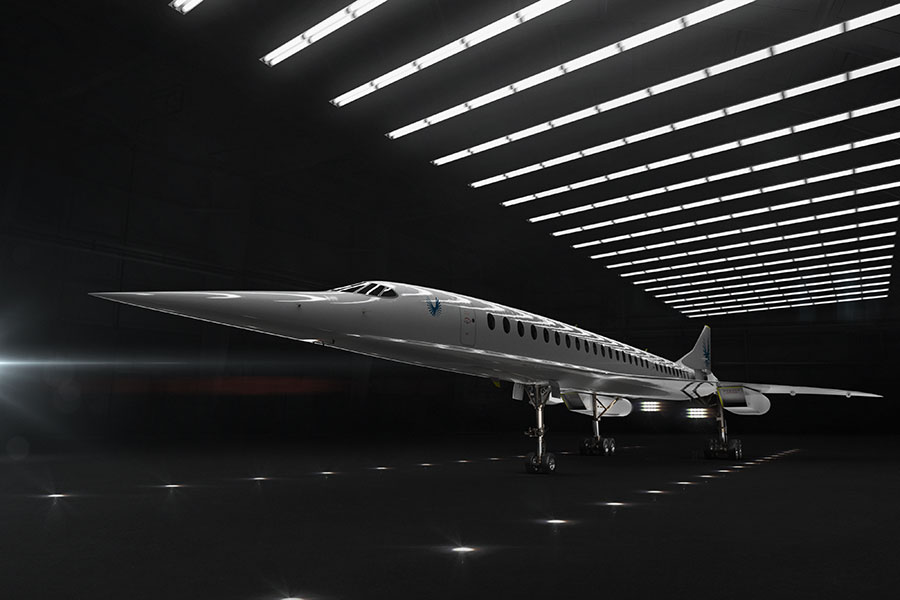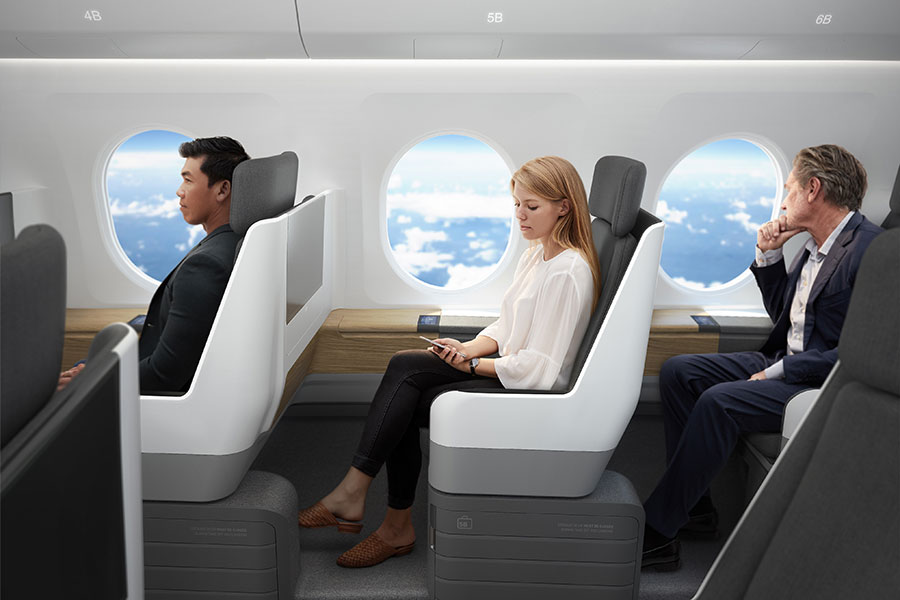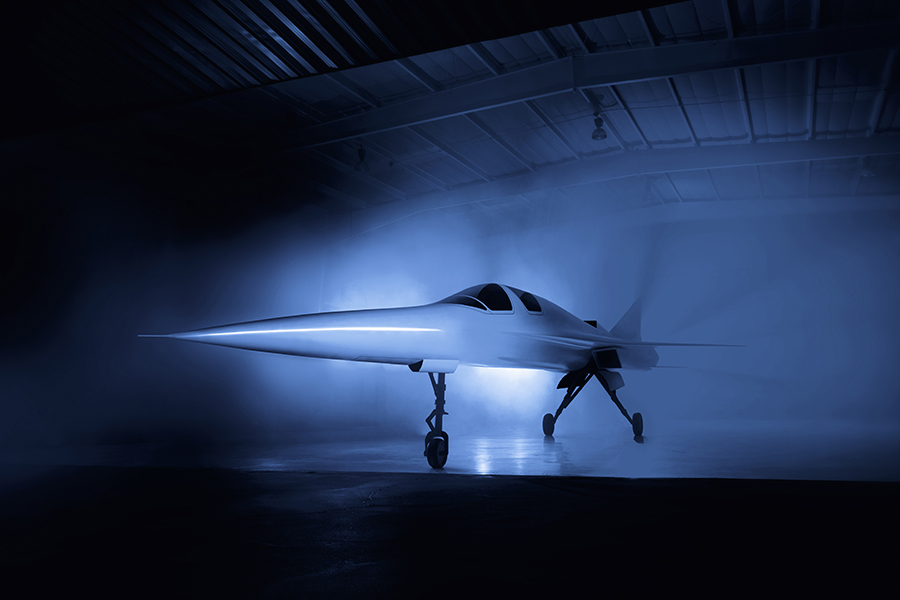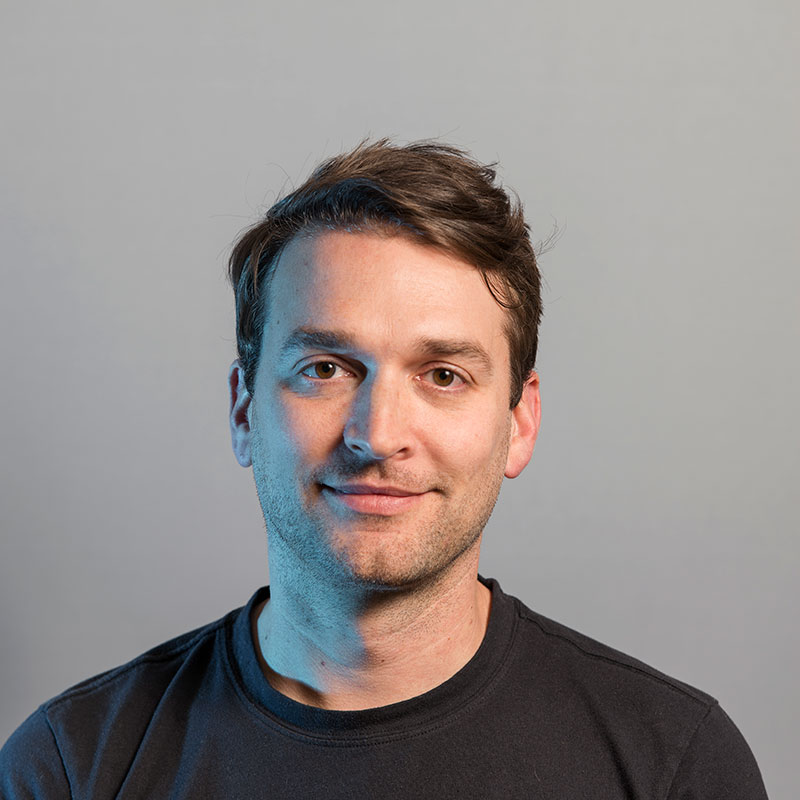
Alumni Spotlight - Greg Krauland (MIIPS '04)
Engineering products at the speed of light
Gregory Krauland is a time traveler.
“There’s a speed of travel at which you can unlock days,” he explains. At Boom Supersonic, Krauland and his team are revolutionizing air travel by engineering a commercial airliner that will cut flight times in half.
“Would you rather be in a hotel room in Tokyo, or home, in your own bed? Wouldn't you want to make it back from a meeting in London in time for dinner at 7 p.m.?” Krauland poses, sharing Boom's vision for high-speed, transoceanic travel.

Rendering of Boom Supersonic aircraft interior
Krauland’s career in aviation began over a decade ago when he joined the aerospace company Scaled Composites as a design engineer. At Scaled Composites, the ideation and design skills he learned at Carnegie Mellon were put into action as he developed new aircraft concepts. His team worked on the experimental vehicle SpaceShipTwo, a rocket-powered spacecraft, as well as the White Knight cargo aircrafts used to launch SpaceShipTwo.
For Krauland, the flight test of his first aircraft was the realization of a longtime dream and a defining moment for his career.
After a few years at Scaled Composites, Krauland was invited to pursue an opportunity at a new aerospace company: SpaceX. At SpaceX, he led a small team of engineers in the construction of the Falcon 9 launch vehicle. Krauland’s responsibilities including everything from making decisions on raw materials and analyzing costs to working with customers, as well as overseeing the mission and flight operations of Falcon 9.
"Rockets are tremendously fascinating and have a huge effect on humanity," Krauland says of his work at SpaceX. "But that technology isn’t necessarily present in everyday life. And I've always been an airplane guy."
After eight years of product development at SpaceX, Krauland decided to pursue his life-long dream of engineering airplanes. He left the intergalactic world of space travel to envision the future of aircraft technology at the aerospace startup Boom Supersonic.
"We're working on a product that buys back travelers' time," Krauland says of his current role. As a Program Manager at Boom, he manages the schedule, budget, and execution of XB-1, a demonstrative aircraft used to test the efficiency and safety of the supersonic technologies proposed for commercial flight.

Boom Supersonic XB-1 Demonstrative Vehicle
As he envisions a world that is more accessible and affordable to travelers, Krauland considers the scale and impact of air travel.
"Looking back on history, for years there were no west coast baseball teams because travel times were so prohibitive. The non-stop coastal flights and the jet age made the San Francisco Giants and Los Angeles Dodgers possible. Air travel meaningfully affects the way people operate and the way humanity travels around the globe. It changes what it means to get from Point A to Point B.”
The Integrated Innovation Experience
Krauland was among the first to graduate from the MPD (now MIIPS) program in 2004. As an experienced engineer committed to integrated product development, he credits the MPD program for shaping the product development philosophy he's continued to apply throughout his career.
"Engineering is the elegant solution to a difficult problem. It's more than building a well-engineered system, but also knowing how to create a well-designed system. The MPD program succinctly tied together my engineering and industrial design skills, and I apply those principles by approaching product development holistically."

